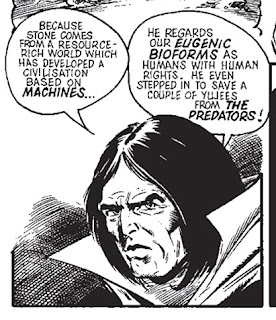Book Review: 'Mona Lisa Overdrive' by William Gibson
4 / 5 Stars
Mona Lisa Overdrive first was published in hardback in November 1988; this Bantam Spectra mass market paperback version (308 pp) was released in December 1989. The cover artwork is by Will Cormier.
By 1988, the year Mona Lisa Overdrive was published, cyberpunk was firmly established as a pop culture phenomenon, and its role in reviving sf was undeniable. 'First generation' cyberpunk novels from Bruce Sterling, Rudy Rucker, John Shirley, Greg Bear, Lewis Shiner, William Thomas Quick, and other authors were commanding a lot of attention.
Having played the leading role in creating cyberpunk, Gibson found himself obliged to conclude the themes and plots generated in the genre's two touchstone novels, Neuromancer and Count Zero, even as the new talents were stepping into the spotlight with their own innovative takes on the genre. This could not have been the easiest of tasks for Gibson.................
Mona Lisa Overdrive is the concluding volume in the so-called Sprawl trilogy; the preceding volumes of course are Neuromancer (1984) and Count Zero (1986).
Mona Lisa Overdrive is set eight years after the events of Count Zero. While Count Zero had three major plotlines, with Mona Lisa Overdrive, Gibson expands to four.
One involves Angie Mitchell, who was introduced in Count Zero as a genetically engineered wunderkind who can access cyberspace without need for a computer ‘jack’ inserted into her skull. All grown up, Angie now is a global superstar due to her participation in a network-based reality show centering on the activities of the rich and famous.
Another plotline concerns Bobby Newmark, the ‘Count’ in Count Zero, and some wasteland scavengers.
Another deals with Kumiko Yanaka, the teenaged daughter of a Yakuza boss; as the novel opens, she is traveling to the UK to shelter from a burgeoning war between her father and other global criminal enterprises.
The fourth plotline involves Mona, a runaway who is eking out an unrewarding existence in Florida as a streetwalker. Mona’s boyfriend / pimp Eddy is yet another low-level hustler with big ambitions, but no real chance at achieving them. Until, that is, Eddy befriends a man named Prior, who is wealthy, carries a gun, and has a special interest in Mona........
Without disclosing major spoilers, I’ll say that the backstory to Mona Lisa Overdrive deals with the two AIs introduced in the previous volumes in the trilogy: Neuromancer and Wintermute. These AIs are making their presence known to the hacker underground via 'voodoo' avatars. The communications from the two AIs portend the advent of massive changes to the architecture of cyberspace.
But the actions of the AIs aren't the only efforts underway to alter the future of mankind. For the intelligence behind the creation of cyberspace has its own aims...........aims that will involve the murder of Angie Mitchell..........
Most of the impetus for reading Mona Lisa Overdrive comes from trying to figure out how Gibson will bring his four different plotlines together into any kind of convincing resolution. To his credit, although his handling of the four plotlines becomes a bit awkward at times (making this novel arguably the weakest entry in the Sprawl Trilogy), he does indeed do this.
Summing up, despite its rather diffuse nature, Mona Lisa Overdrive is a serviceable conclusion to the Sprawl trilogy. I can’t recommend it as a standalone read, as knowledge of the events in Neuromancer and Count Zero are necessary prerequisites; but if you are familiar with the first two volumes, then getting a copy of Mona Lisa Overdrive is recommended.






















































































